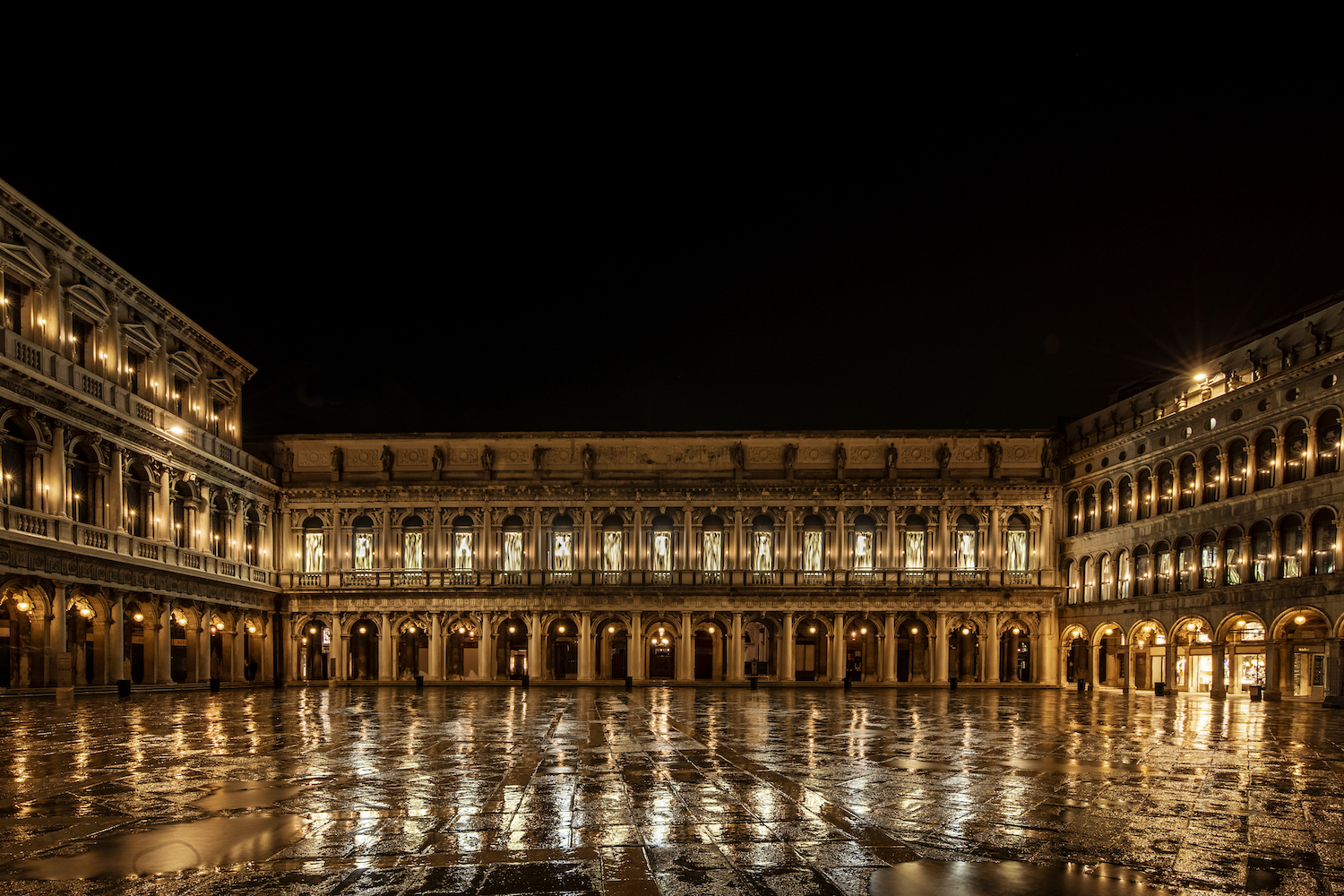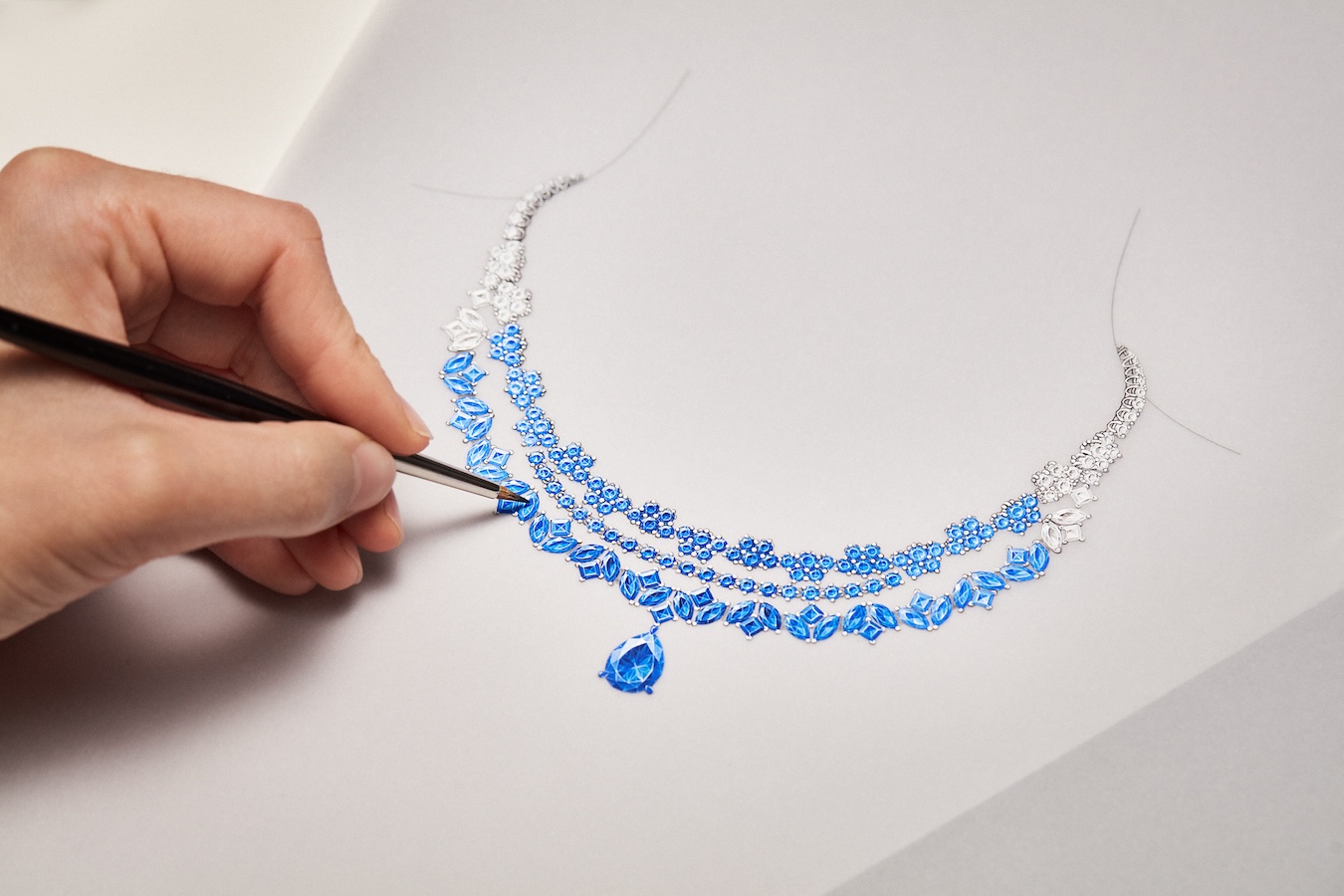The 80-year-old Italian artist Fabrizio Plessi moved to Venice 60 years ago. As a dreamer, the city welcomed his aspirations, and he began creating video art that pushed powerful considerations for time and space. He explored the material that surrounded him—water. Plessi has become synonymous with the element, staking his space in the art world with video installations that question ideas about history, landscape, and time.
Holistic experiences, exhibitions, and installations like Roma, “Under Water,” and “Vertical Seas,” mix the technological and the historical, merged the primordial and the mystical, and bridged the physical and the spiritual. Nearly 20 years ago for the Venice Biennale in 2001, he presented “Waterfire” on the front of Museo Correr in the Piazza San Marco. Today, in the very same space, he’s presenting “L’Età dell’Oro” for a triumphant return.
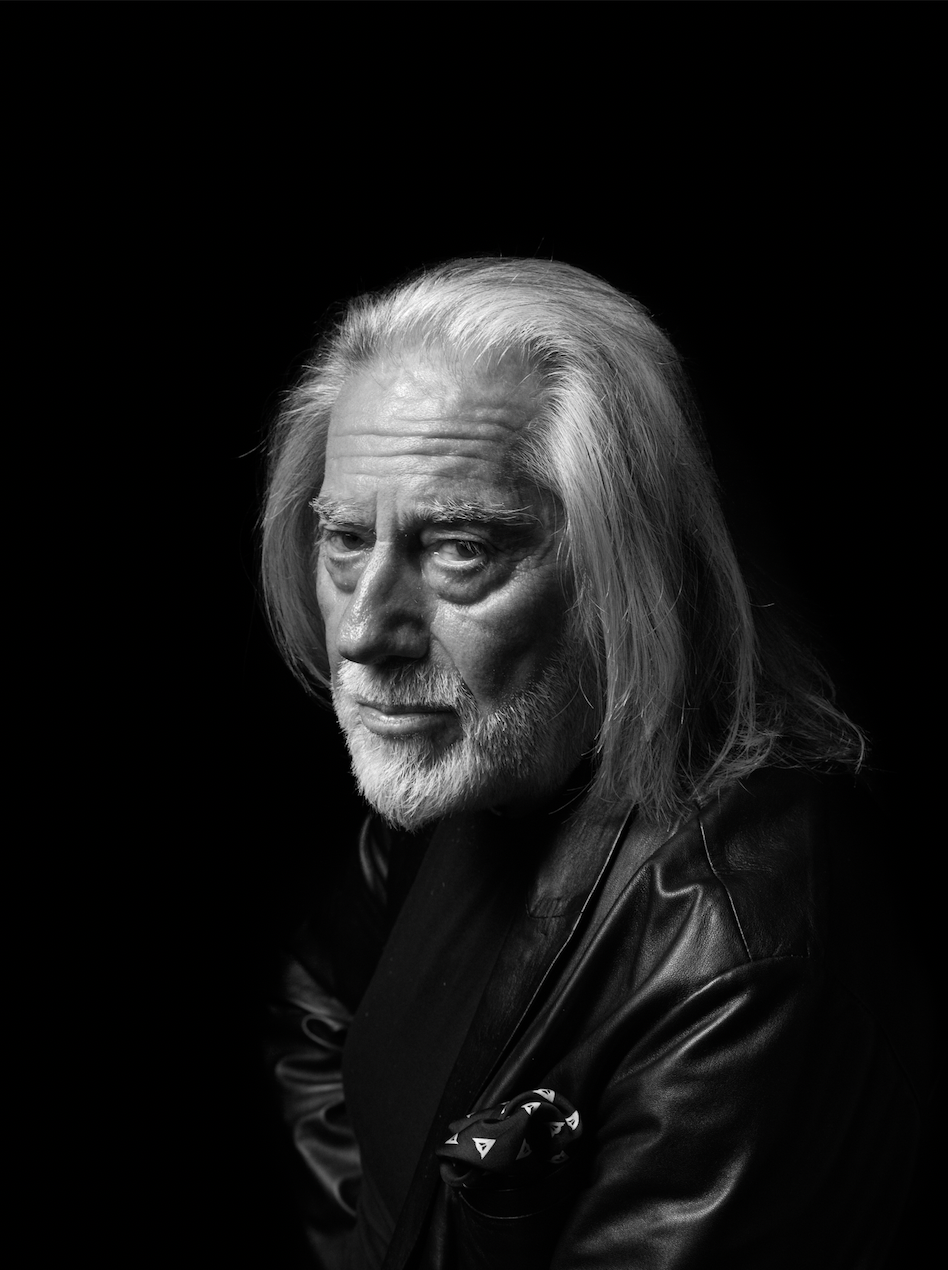
Portrait of Fabrizio Plessi by Piero Viti.
Presented by Dior, Plessi’s latest public installation—meaning “The Golden Age”—is on view in the famous square through November 1. As an emotional homage to his life in Venice, a series of video installations featuring gold water gives a nostalgic nod to the beauty that surrounds him. Projected high above the square, the gold streams also speak to the mosaics found within the Basilica, and there’s a cryptic message hidden between its runnels, too—“Pax Tibi.” In Venice, the Latin scripture is famous for appearing on the winged lion statue that guards St. Mark’s Cathedral. Set to a soundtrack composed by Michael Nyman, the installation serves as a reflective remembrance to the city that he loves, and to the materials that make it shine.
Whitewall spoke with Plessi about this monumental installation and how Venice is a state of mind.
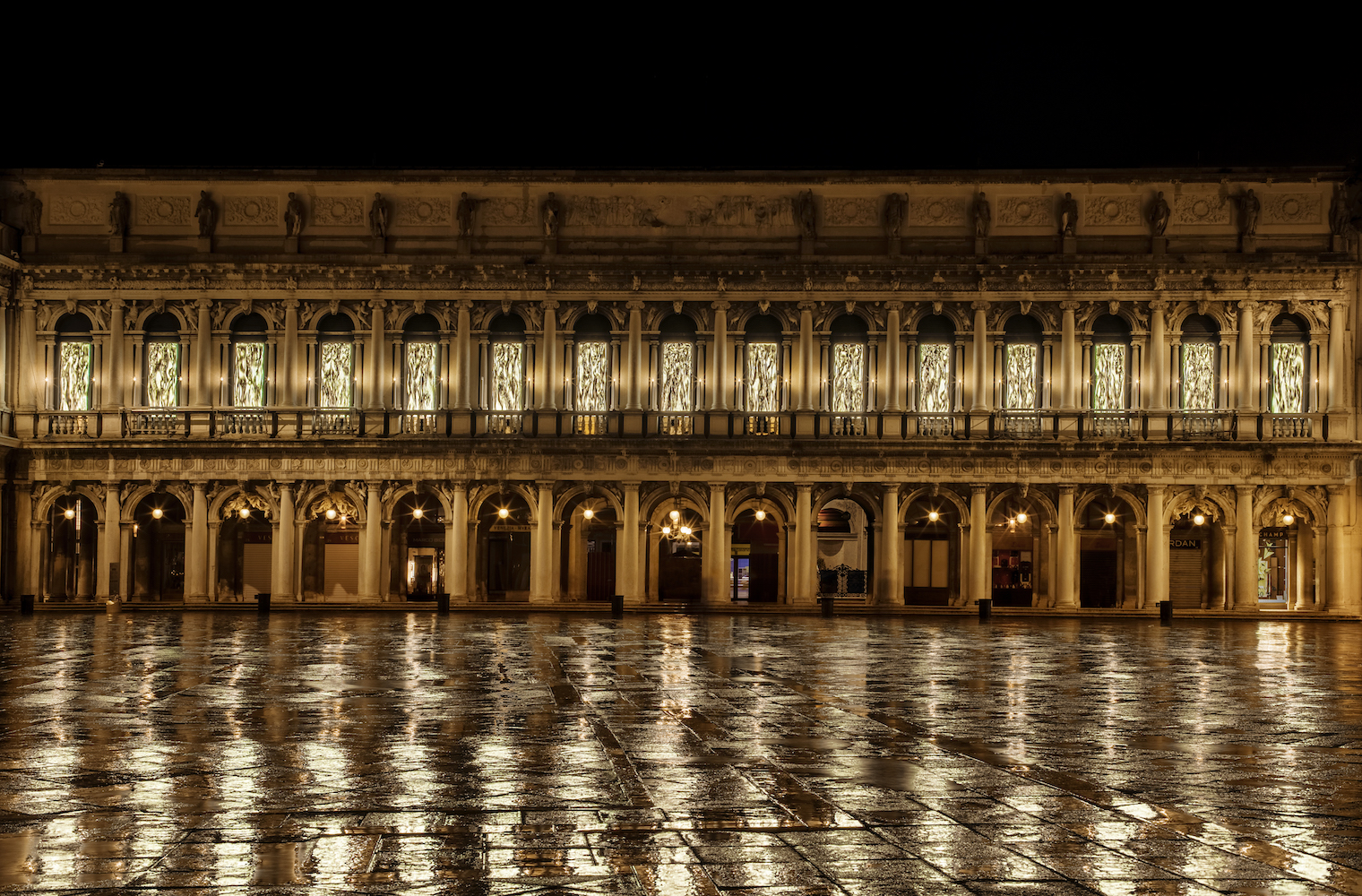
Courtesy of Fabrizio Plessi and Dior.
WHITEWALL: This is such a beautiful return to the same space you presented “Waterfire” almost 20 years ago. Can you tell us a bit “The Golden Age” and why it’s special?
FABRIZIO PLESSI: Well, I decided to make the installation at exactly the same place, with the same instruments, to trust my vitality with art and my way of expression.
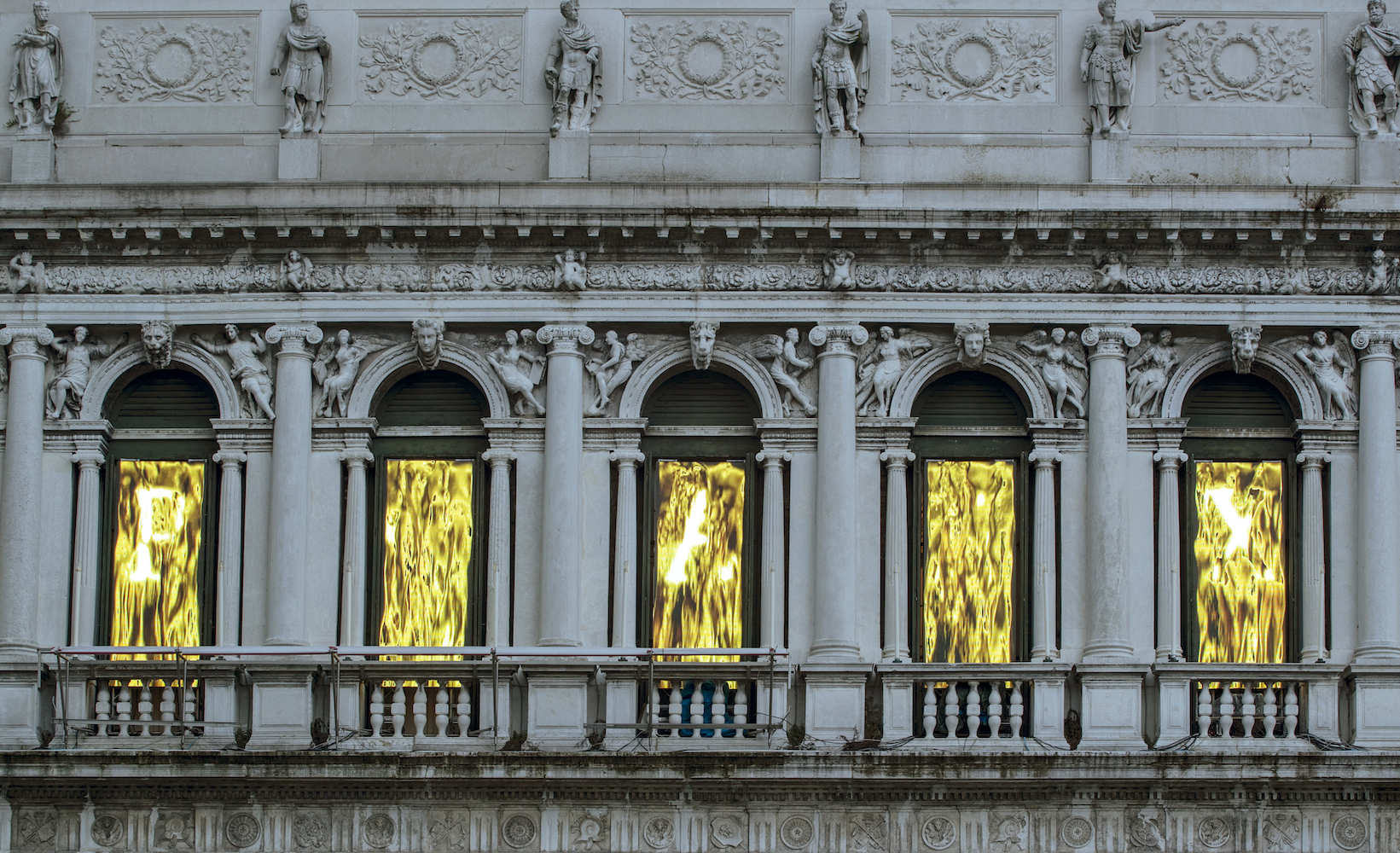
Courtesy of Fabrizio Plessi and Dior.
WW: Why did you want to include gold?
FP: Starting from this very obscure, dark moment, I think that gold is a light that can illuminate, and give us a way to satisfy our conscience. I decided to make this installation with gold because it related to the Basilica of San Marco, and the mosaics that are there. It’s a sort of melting mosaic.
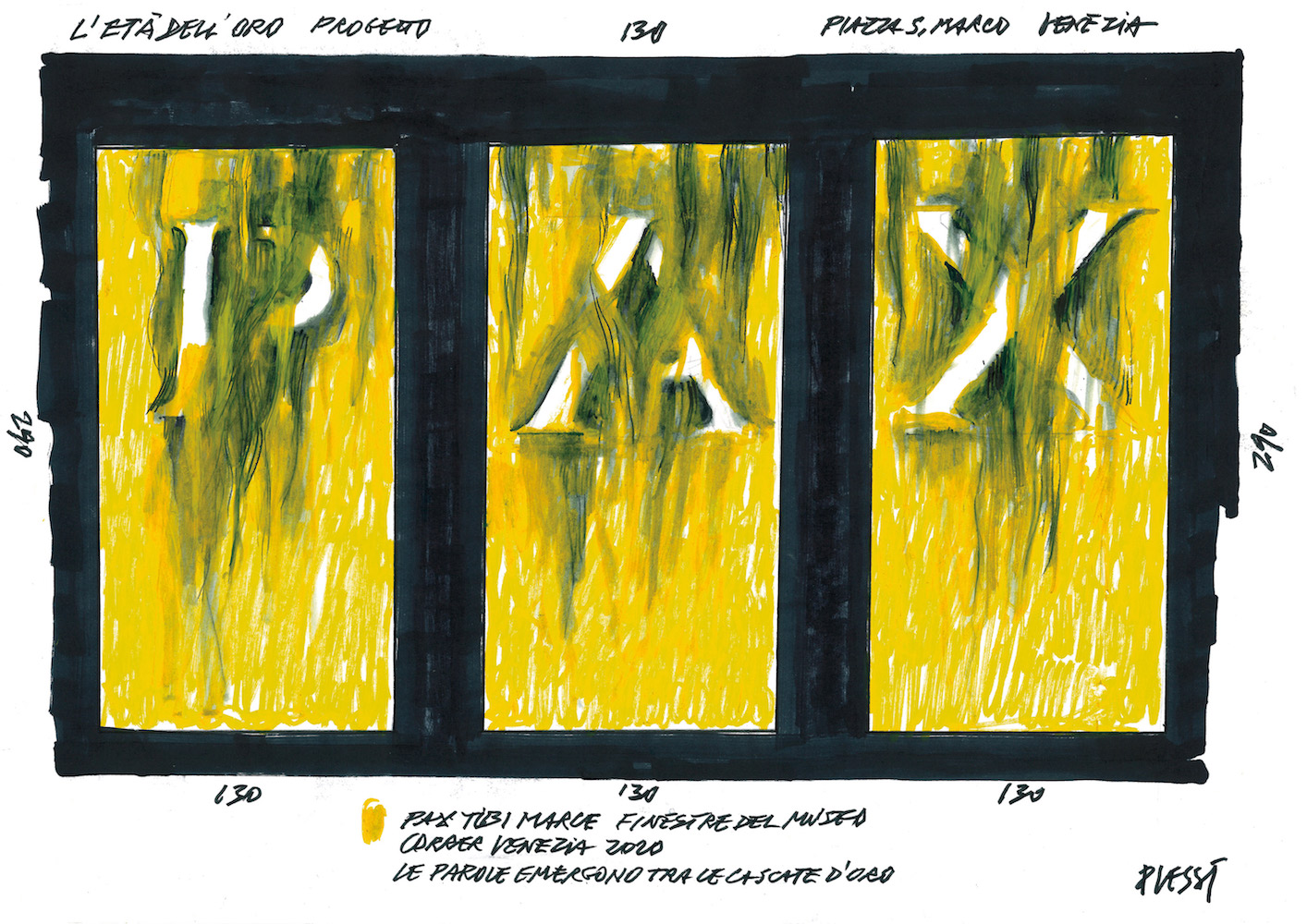
Courtesy of Fabrizio Plessi and Dior.
The windows overlook the Basilica of San Marco. By looking through the windows, I looked at the mosaics inside the Basilica. So, I wanted to melt the mosaics into the Basilica.
WW: Why was Pax Tibi a text you wanted to include in this work?
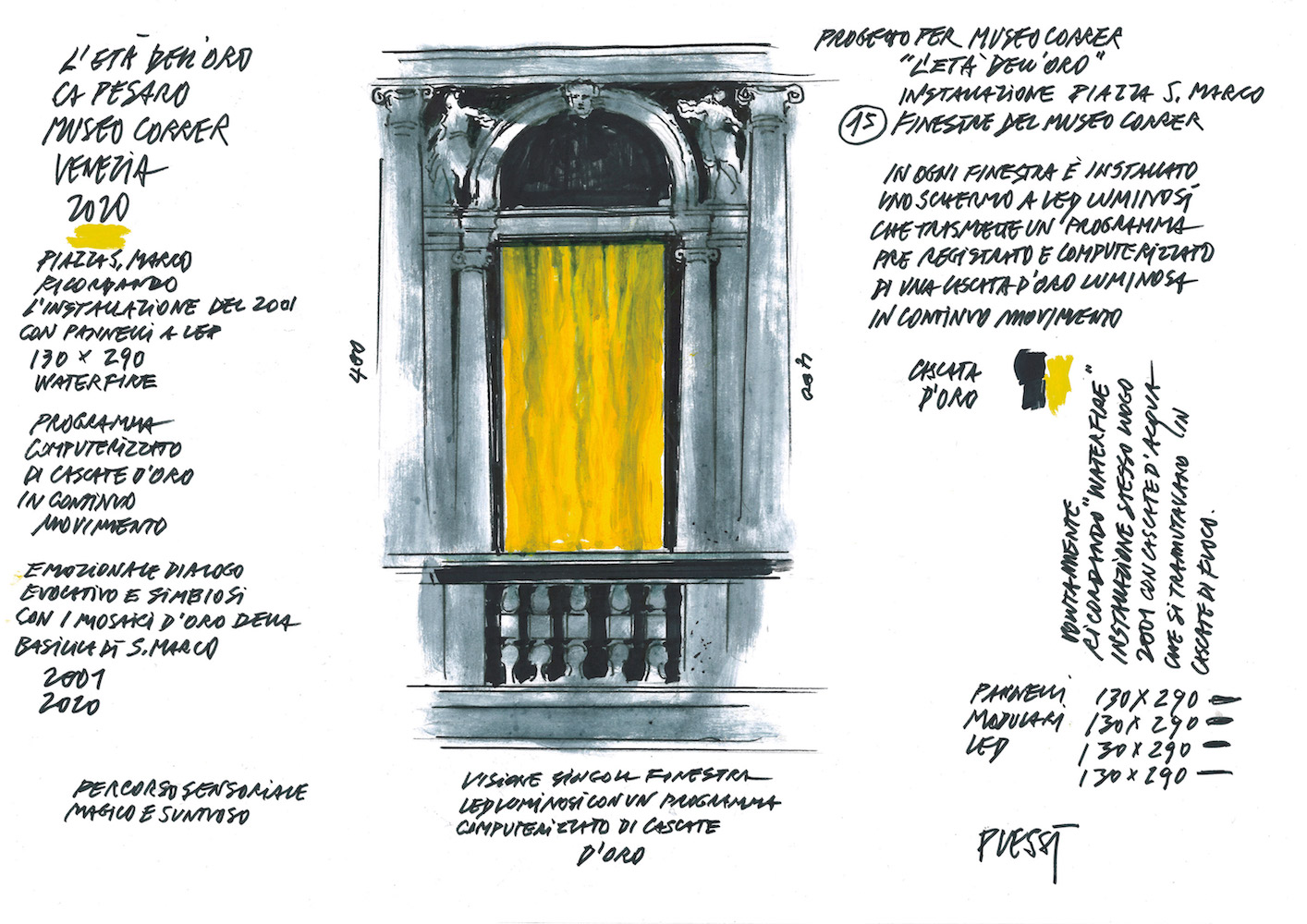
Courtesy of Fabrizio Plessi and Dior.
FP: On the bible’s script of San Marco, “Pax Tibi Marce” (“Peace to You, Mark”) is the original inscription. With this, I intended to give an evangelical meaning to the message. The fact that the gold is very physical, the light of Pax Tibi is very spiritual. It’s also a proposal of peace, light, and serenity.
WW: Over the years, you’ve been regarded for your work using the material of water. Why was this something you originally started exploring? Is it based on your surroundings?
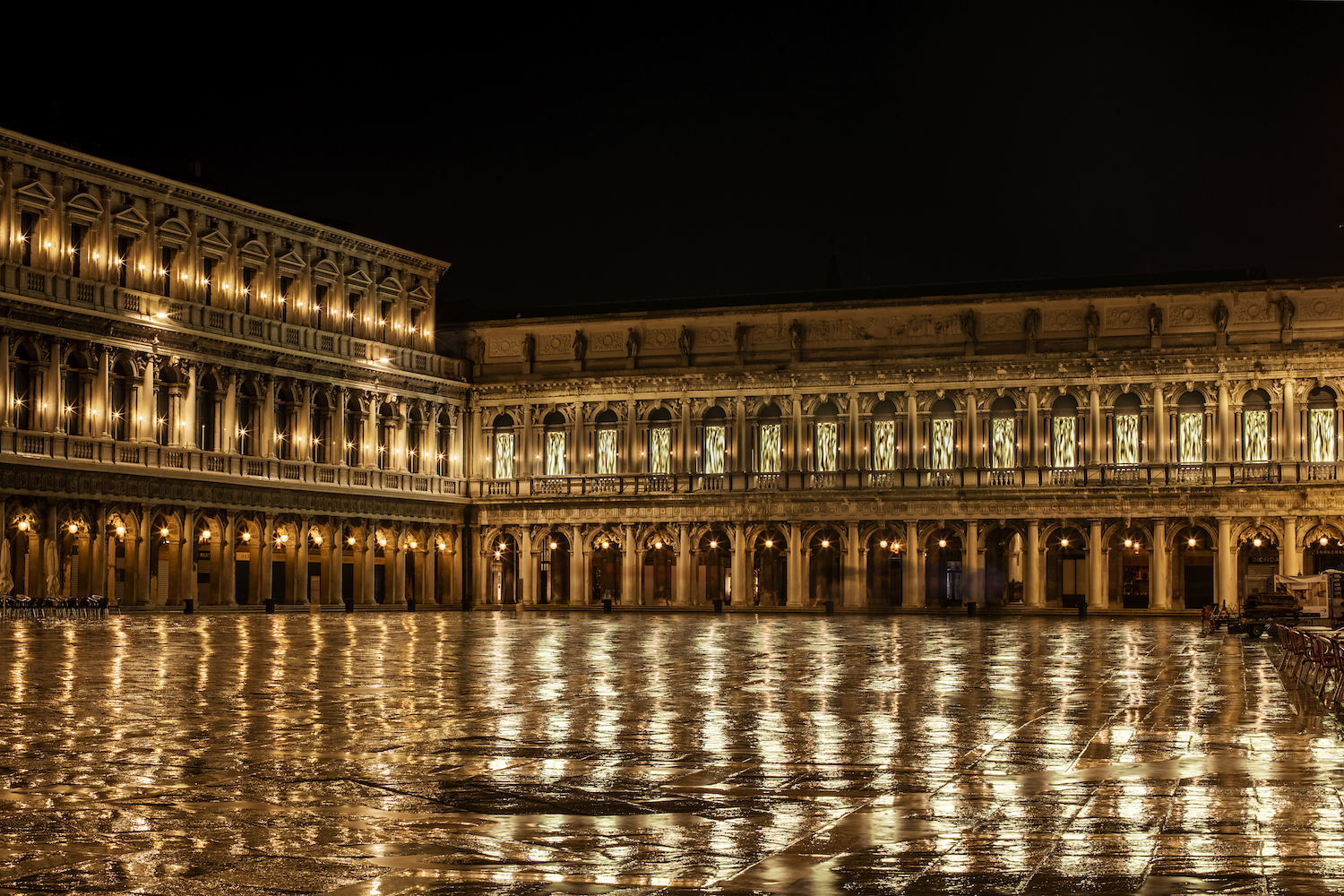
Courtesy of Fabrizio Plessi and Dior.
FP: I chose water because I live in a city that is flooded by water. It being Venice—the case of liquid and fluidity—and it being society in this moment—fluid, too—Venice is the perfect representation of this state of mind. It’s a sort of magician that makes water into gold. The poetry of gold in Dior, and the poetry of gold in Venice, has been an inviting meeting.
WW: You’re also known for your use of technology in video art over the years. How have the advancements in technology over the recent years changed your practice?
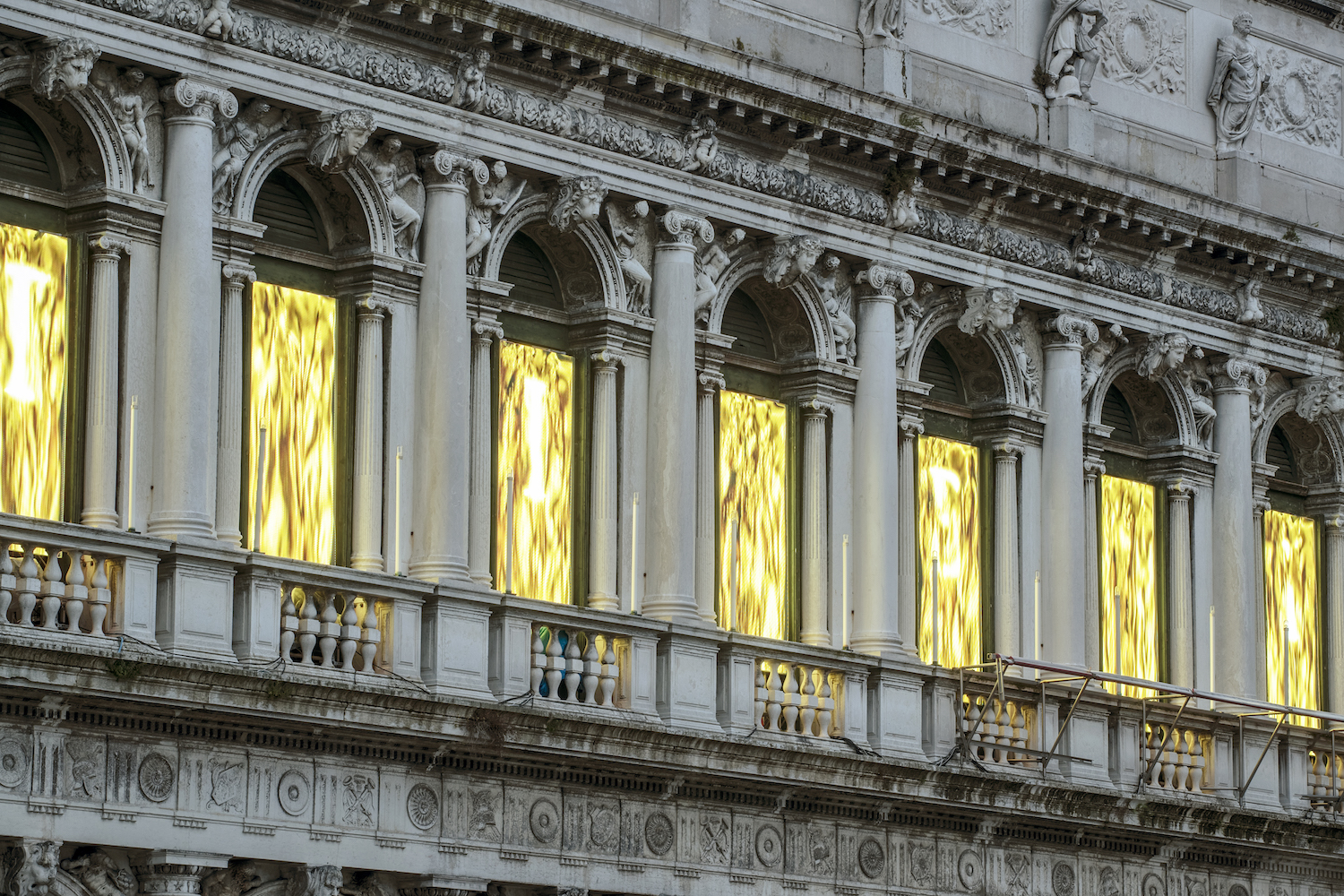
Courtesy of Fabrizio Plessi and Dior.
FP: It’s not the fact that technology has changed a lot, it’s the fact that we have—to dominate technology and its change. We must use technology, and not vice-versa.
WW: What is the environment in your studio like?
FP: In the morning, I leave my palazzo and go to the studio on Giudecca—an island that you can’t reach by walking. It’s sort of a monastery, where I’m isolated from the rest of the world. I stay there all day. It’s a creative place where my ideas are born. And then at night, I take the Caronte back home. My studio is my mental place.
WW: Venice has suffered in many ways over time, but recently even more so with continued flooding and the impact of the Coronavirus. This installation reminds the public that beauty has always and will always be there. What kind of beauty does the city hold for you? How has it grown to be so special to you over the years?
FP: I wasn’t born in Venice. I intended to pay homage to La Serenissima because 60 years ago, it welcomed me. I was very young, a dreaming boy. And in a way, Venice accomplished my dreaming. I wanted to give back what I received.
Living in Venice is a privilege. For me, Venice is the most beautiful city in the world. Venice speaks not just to a physical place, but to a state of mind, too.
With Venice being a city of water, it also allowed me to develop my ideas and theories about water—because water is the first element of the city.
WW: Your work bridges the past and the future. Where do you see the future of art being?
FP: Yes, I’m bridging, but the future doesn’t exist if you don’t look over the past. And in this way, the future and the past are the same.
Later this year in prologue to a major retrospective, “L’Età dell’Oro” will continue its presentation at Galleria Internazionale d’Arte Moderna di Ca’ Pesaro.



